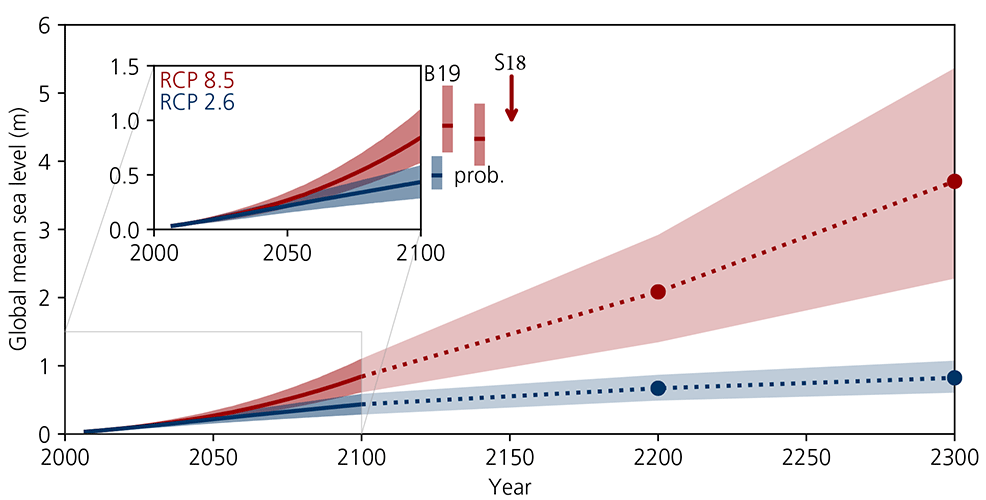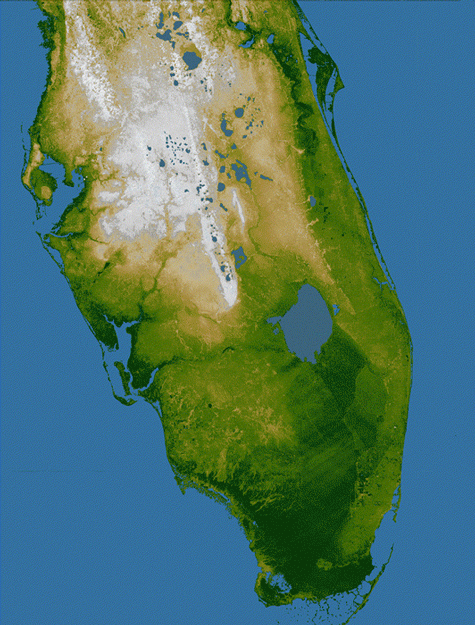
27th September 2019 Future sea level predictions revised upwards The Intergovernmental Panel on Climate Change (IPCC) has published its Special Report on the Ocean and Cryosphere in a Changing Climate. This includes a revised projection for sea level rise, upwards by 10 cm to 1.1 metres by 2100. The report, released this week, reveals the social, economic and environmental benefits of adaptation for sustainable development and, conversely, the escalating costs and risks of delayed action. “The open sea, the Arctic, the Antarctic and the high mountains may seem far away to many people,” said Hoesung Lee, Chair of the IPCC. “But we depend on them and are influenced by them directly and indirectly in many ways – for weather and climate, for food and water, for energy, trade, transport, recreation and tourism, for health and wellbeing, for culture and identity. If we reduce emissions sharply, consequences for people and their livelihoods will still be challenging, but potentially more manageable for the most vulnerable. We increase our ability to build resilience and there will be more benefits for sustainable development.” More than 100 authors from 36 countries assessed the latest scientific literature related to the oceans and cryosphere for the report, referencing about 7,000 scientific publications. Glaciers and ice sheets in polar and mountain regions are losing mass, contributing to an increasing rate of sea level rise, together with thermal expansion of the warmer oceans. While sea level rose worldwide by around 15 cm during the 20th century, it is currently rising more than twice as fast. The annual rate is now over 3.6 mm per year and accelerating, the report shows. In the higher emissions scenario known as RCP 8.5 (the path humanity is currently on), the global sea level rises by between 60 and 110 cm. This upper range is 10 cm higher than the previous report. The oceans continue to rise for centuries in all scenarios, according to the analysis, which includes a graph projecting as far out as the year 2300.
When you're standing on a shoreline and staring down at your feet, an extra 10 cm may not sound like much. However, it amounts to an extra 10 million people exposed to flooding – equivalent to the entire population of Seoul, South Korea, or 2.5 times the number of people in Los Angeles, California. “In recent decades, the rate of sea level rise has accelerated – due to growing water inputs from ice sheets in Greenland and Antarctica, in addition to the contribution of meltwater from glaciers,” explains Valérie Masson-Delmotte, Co-Chair of IPCC Working Group I. Sea level rise will increase the frequency of extreme sea level events, which occur for example during high tides and intense storms. Indications are that with any degree of additional warming, events that occurred once per century in the past will occur every year by 2050 in many regions, increasing the risks for many low-lying coastal cities and small islands. Without major investments in adaptation, they would be exposed to escalating flood risks. Some island nations are likely to become uninhabitable due to climate-related ocean and cryosphere change, the report shows. “The future for low-lying coastal communities looks extremely bleak,” said Jonathan Bamber, Professor of Physical Geography at Bristol University in the UK who was not involved in this report. “But the consequences will be felt by all of us. There is plenty to be concerned about for the future of humanity and social order from the headlines in this report.” “We will only be able to keep global warming to well below 2°C above pre-industrial levels if we effect unprecedented transitions in all aspects of society – including energy, land and ecosystems, urban and infrastructure as well as industry,” said Debra Roberts, Co-Chair of IPCC Working Group II. “The ambitious climate policies and emissions reductions required to deliver the Paris Agreement will also protect the ocean and cryosphere – and ultimately sustain all life on Earth. The more decisively and the earlier we act, the more able we will be to address unavoidable changes, manage risks, improve our lives and achieve sustainability for ecosystems and people around the world – today and in the future,” Roberts said.
Comments »
If you enjoyed this article, please consider sharing it:
|








